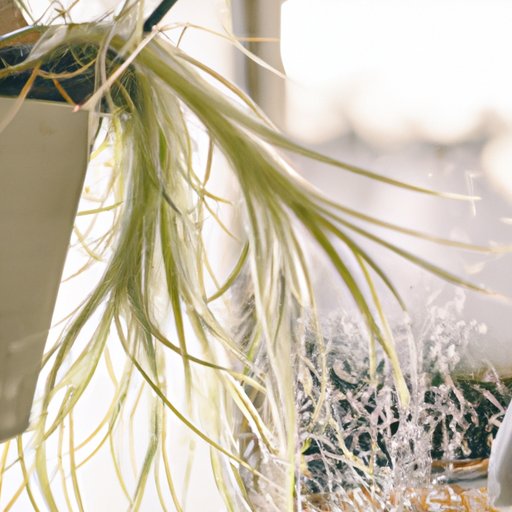
Introduction
Air plants are unique and fascinating plants that are becoming increasingly popular in homes and offices. These plants are also known as tillandsias, and they are characterized by their ability to grow without soil. As the name suggests, they only need air to thrive.
While air plants are relatively low maintenance, watering them can be a challenge. Watering them the wrong way may cause damage to the plant. Therefore, it is essential to know how to water air plants correctly. In this article, we shall discuss the best watering techniques for keeping air plants healthy and thriving.
Understanding the water requirements of air plants
Air plants come in many different species, and they have different water requirements. Therefore, it is crucial to identify the specific type of air plant you have to ensure you are using the correct watering technique.
It is also essential to analyze the plant’s environment to determine its water needs. The environment in which the plant is located impacts the amount of moisture it gains from the atmosphere. For example, air plants in a humid room may not need watering as often as those in a dry environment.
How often should you water your air plants?
Knowing how often to water your air plants is crucial to their survival. Various factors can impact the frequency of watering, including humidity, temperature, air circulation, and location.
As a rule of thumb, air plants require watering once a week. However, this may vary depending on their environment. Air plants located in a humid room may only require watering bi-weekly, while those in a dry room may need watering twice a week.
What kind of water is best for air plants?
The water quality that air plants require is of great importance. Using hard water or water with too high mineral content may cause damage to the plant. Therefore, it is best to use filtered or distilled water for watering air plants.
Hard water is water that contains high levels of calcium, magnesium, and other minerals. Hard water can cause harm to your air plants because of the excess minerals. The minerals can build upon the leaves, causing discoloration and preventing the plant from absorbing nutrients correctly.
Soaking Vs. Misting
Soaking and misting are the two main watering techniques you can use for your air plant. Each technique has its benefits and drawbacks, and the choice will largely depend on your plant’s specific needs.
Soaking involves placing the plant in water for about half an hour. This method ensures that the entire plant absorbs an adequate amount of water. The drawback is that soaking the plant too long may cause damage to the plant’s roots.
Misting is the process of spraying water onto the leaves of the air plant. This method is suitable for plants that do not require a lot of water, or those with delicate leaves that may become damaged when soaked in water. However, misting does not ensure that the entire plant is sufficiently hydrated.
Troubleshooting watering issues with air plants
Overwatering and underwatering are common mistakes that plant owners make when caring for their air plants. Overwatering leads to root rot, while underwatering causes the plant to dry up.
You can avoid these issues by not mistaking the plant’s brown, withered leaves as a sign of underwatering. The leaves may become discolored when the plant is overwatered.
When you notice your air plant’s leaves are turning brown or yellow, this indicates that there is a problem with its water intake. The solution is to reduce the frequency of watering and eliminate any water that may have gathered in the plant’s base.
Tips for maintaining healthy air plants
To ensure that your air plants remain healthy, ensure that you expose them to plenty of sunlight, maintain a comfortable temperature range and provide good air circulation.
You should also adjust the watering schedule based on the plant’s environment. Air plants in a humid room may not require as much watering as those in a dry room. Additionally, avoid exposing air plants to direct sunlight for too long, as this can cause them to dry up and wither.
Finally, to ensure healthy growth and development of air plants, rotate the plants from time to time to ensure that every part of the plant receives an adequate amount of light.
Conclusion
Air plants make for great additions to any space and come in different forms, shapes, and sizes. However, they require special care when it comes to watering. Knowing how to water air plants appropriately ensures that the plants remain healthy and vibrant.
We hope that this guide has provided you with valuable insights on how to water air plants successfully. With the right techniques, tips, and tricks, you can keep your air plants thriving for a long time.





